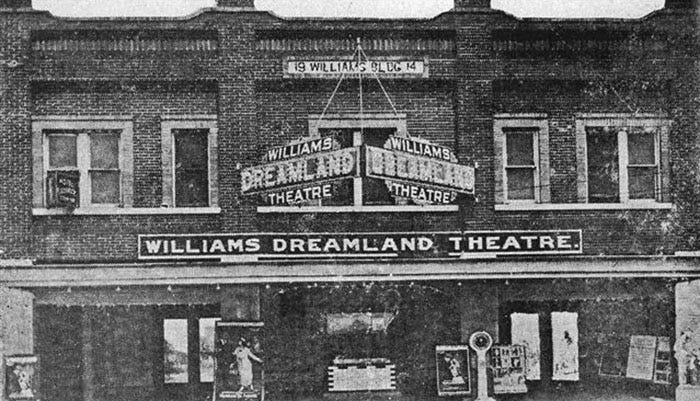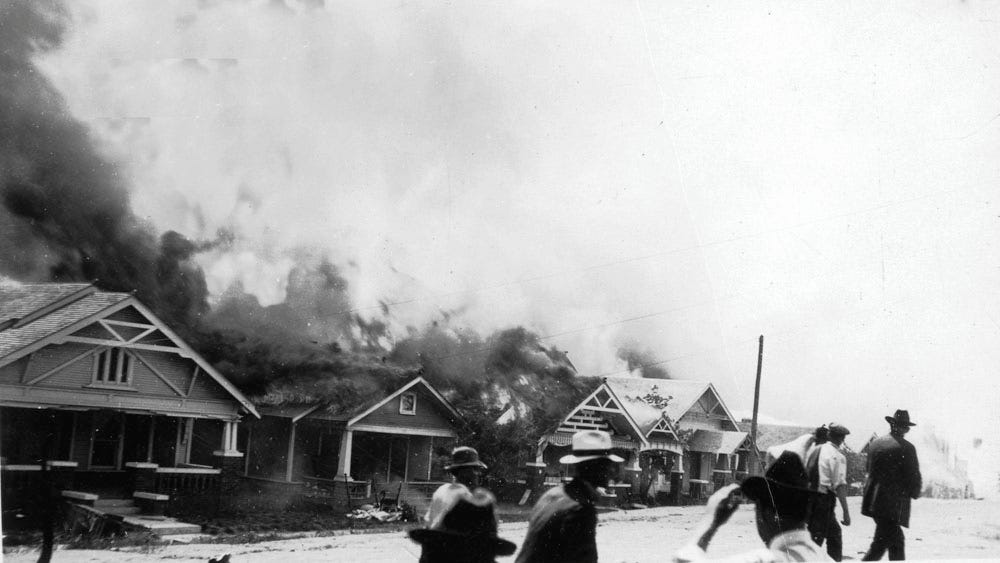Disregarded History: A Brief Look at Black Wall Street

How much do we know about black history? I mean how much do we really know? You might be rolling your eyes thinking, “Obviously we know about black history, it’s Black History Month for goodness’ sake!”
But besides slavery and the Civil Rights Movement, do you really know as much as you think you do?
I’m black and reasonably informed, but I can wholeheartedly say no. No, I don’t know much besides Martin Luther King, Jr., Rosa Parks, and some good old Frederick Douglass (barely.)
Obviously everyone’s education is a little bit different, but it’s a safe bet that a lot of the American population have been taught this way.
To do my part, I will be writing multiple articles over time to talk about bits of history that have been overlooked and disregarded.
Let’s start with the neighborhood of Greenwood in Tulsa, Oklahoma, also known as Black Wall Street or Little Africa.
It was a thriving community pioneered by entrepreneurs O.W. Gurley and J.B Stratford in 1906. It was the site of numerous businesses including pharmacies, grocery stores, theaters, and even two newspapers.

It was a home to over 10,000 people and Gurley made sure to sell to blacks only, wanting to create an ideal community.
Memorial Day 1921
The incident that usurped this burgeoning district occurred on May 31, 1921. Dick Rowland, a 19-year-old shoeshiner, was accused of sexually assaulting Sarah Page, a 17-year-old elevator operator. No one knows exactly what happened that day; it’s widely suggested that it was a simple misunderstanding where Rowland tripped over Page and stepped on her foot, causing her to scream. The cops were called and this set off a chain of events that would become one of America’s darkest memories.

A newspaper ran the article “Nab Negro for Attacking Girl in Elevator.” Tulsa’s white citizens grabbed their ropes and gathered at the courthouse where Rowland was being held; they were ready for a lynching.
While they demanded the authorities to release Rowland, Greenwood residents caught wind of what was happening. Twenty-five armed World War I veterans went to the courthouse to offer their help to protect Rowland. They were denied.
The sight of armed black people incited the mob to grab their weapons, even going so far as to unsuccessfully attempt to break into the National Guard Armory.
A rumor that the courthouse was being overrun prompted Greenwood residents to offer assistance again. They arrived with an even bigger crowd of about seventy-five and were denied again. This time, a white resident tried to disarm one of them and a struggle occurred, leading to a single gunshot.
This triggered the massacre which bled into the next day.
Both sides opened fire, leading to casualties for both. Eventually, the Greenwood residents were outnumbered and retreated, but fights began to occur all around the city.
Every African-American was a target. Civilians who had nothing to do with the incident were attacked and murdered.
500 white men were deemed “Special Deputies” by the police force and this mob turned militia overran Greenwood, looting homes and businesses.


Airplanes were used to drop explosives and open fire. Most of Greenwood was burned to the ground. Hospitals, libraries, and 1,256 homes perished. People who were lucky enough to escape death, were held as prisoners and given to the police, a fate none of the white rioters had to deal with.


Many Greenwood residents fought back, exchanging gunfire with the mob, but in the end, they were outgunned. The area was finally put under martial law by the National Guard on June 1, 1921.
An estimated 300 dead and 35 square blocks of the community destroyed. The survivors who were once living in the comfort of Black Wall Street were homeless and forced to live in tents.


The city even tried to pass an ordinance which asserted that no one could build on burnt property. Fortunately, Greenwood challenged it and won.
You may be wondering what happened to the two who inadvertently instigated one of the worst riots in American history. Sarah Page never pressed charges, and the case against Dick Rowland was dismissed.
The massacre was largely covered up for decades and the severity was swept under the rug. Even most Tulsans were unaware that it happened until it finally garnered widespread attention when victims and their descendants asked to receive compensation for all that was lost.
The battle for reparations was a long and unfruitful one. The state recognized what happened, but refused to pay. Instead, they received over 300 scholarships, memorials, and economic development in Greenwood.
While writing this article, it was hard not to imagine where we would be as a society if we still had Greenwood today. It’s a symbol of black resilience. 41 years after slavery had ended, African-Americans were able to create a neighborhood where they made their own wealth and owned property. It’s important to remember the triumphs that we had even if the end result is uncomfortable to remember.
That right there, is American History.

Tulsa Race Riot | Greenwood Cultural Center, www.greenwoodculturalcenter.com/tulsa-race-riot.
Tulsa Race Riot | Greenwood Cultural Center, www.greenwoodculturalcenter.com/tulsa-race-riot.
“Spirit of Greenwood: A History of Prosperity & Perseverance.” Tulsa Historical Society & Museum, tulsahistory.org/learn/past-exhibits/spirit-greenwood-history-prosperity-perseverance/.
“Eddie Faye Gates.” Uncrowned Community Builders, www.uncrownedcommunitybuilders.com/person/eddie-faye-gates.
Scott Ellsworth, “Tulsa Race Riot,” The Encyclopedia of Oklahoma History and Culture, www.okhistory.org (accessed February 14, 2018).
“A Sight Which Can Never Be Forgotten.” The Tulsa Race Riot: A Sight Which Can Never Be Forgotten — Archaeology Magazine Archive, 16 Sept. 2003, archive.archaeology.org/online/features/massacre/tulsa.html.

/image%2F3367394%2F20190510%2Fob_6df13d_5.gif)


/https%3A%2F%2Fgame-tool.rocks%2Fimg%2Fh3.png)
